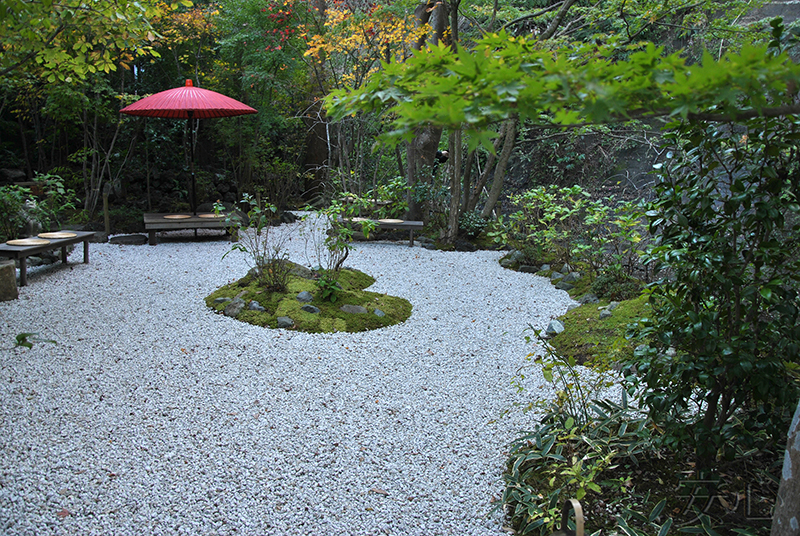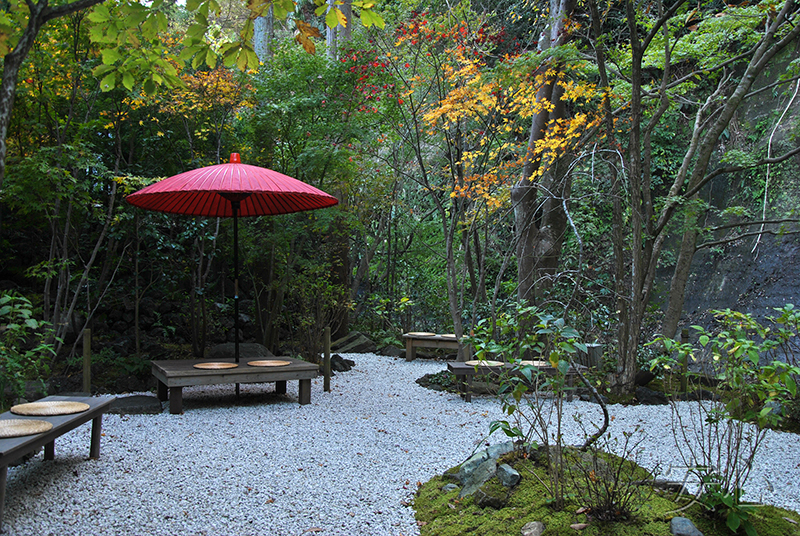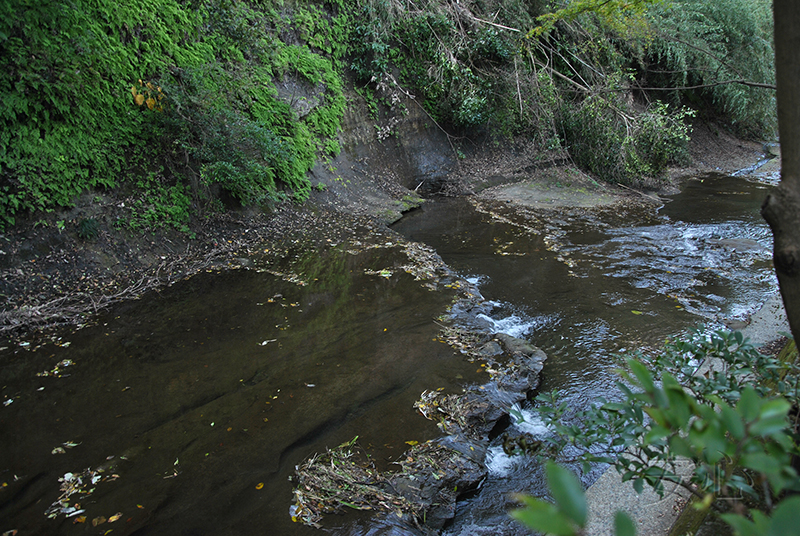
Ichijo Ekan Sanso Garden
Ichijo Ekan was the ninth son of Emperor Goyozei. He was adopted into the Ichijo clan, one of the five aristocratic families that appointed top ministers for the imperor. His given name Kaneto was later changed to Akiyoshi. He served as Chief Advisor and Regent twice respectively, supporting his elder brother, emperor Gomizuno. In his later years he became a Buddhist monk and took the name Chitokuin Ekan.
Ichijo Ekan was well versed in many arts such as Japanese poetry, calligraphy, tea ceremony, Noh theater, ikebana. He also had a great knowledge of architecture, giving detailed instructions for the construction of his mountain retreat in Nishigamo (Kyoto), what was completed in 1646. A garden has also been built in his vast 99,00 m² .
After the Second World War, the villa brought to Kamakura and reconstructed, and was later designated a Nationally Important Cultural Property. Ichijo Ekan Sanso is a stunning example of 17th century Japanese court architectur, the equal of Kyoto’s famous Katsura Rikyu. The use of natural materials, well-crafted fittings, and paintings in a contemporary style on the cedar doors shows the refined, nature-loving taste of nobles of that time.
Along with the building itself, the dry stone garden and stepping stones (said to be influenced by tea master Kanamori Sowa) were also brought from Kyoto. In the summer of 2017, the garden was opened to the general public.
In front of the entrance to the garden there is a ticket office, to the right of it there are nice benches for relaxation.
Around the corner was a small courtyard, which had to be bypassed on the right along the corridor. On the site, covered with grayish gravel, there are three islands.
At the farthest one there is a massive stone lantern tachi-gata.
In the middle you can see the smallest island with a picturesque maple tree growing. And on the nearest island there is a bowl covered with moss. Despite stepping stones, as if leading to the first and third islands, you can only walk along the corridor.
If you are luck to be here in late April or early May, you can admire the endangered yellow orchids in bloom. And in the fall, of course, all attention is directed to the magnificent maples.
We walked along a path lined with rare Meguro stones to the Miyuki-mon gate, what was created to greet the emperor.
On the right side there is a hedge yamamomo tree. In the hedge there is another gate, Amigasa-mon, whose roof is made by a copper sheet. This type of gate is most commonly found in tea gardens. The word "amigasa" consists of two hieroglyphs meaning "woman" and "bamboo hat". Thus, the gate is in the shape of a traditional female bamboo hat. They lead to the Kougetu-an tea room.
The main feature of the sukiya house that everyone pays attention to is the roof, covered with a double layer of thatch.
The wide doors slide open to reveal a beautiful Kyoto-style garden with red pine and maple trees and an emerald moss carpet. You can view the garden from all sides.
The compositional center is a dry stream flowing along the right side of the meadow. Its banks are decorated with stones, and there is a bridge in the center.
A stepping stones lead to the tsukubai. Apparently, water is poured into the bowl just before the tea ceremony.
The building opposite has a tea room with a round window, similar to the one we saw at Meigetsu-in. The window overlooks a small nice garden with Japanese stone lantern and growing bamboo.
By the left end of the house there an interesting path made of shingles dug into the ground. It is made so skillfully that it looks like a stream from afar. There are three stones and a stone lantern between the path and the house, and a bench opposite.
From this path, stepping stones lead to another bench, set up next to the wall.
However, a dry stream is not the whole garden. On the left side there is a secluded gazebo-azumaya surrounded by a live stream. You can get to it by crossing the bridge.
There are also stepping stones.
From here begins the descent down to the Namerigawa River. The road down is covered with pebbles. I can only guess how much effort it costs for gardeners to clear it of autumn leaves!
The lower garden is a territory covered with light gravel, in the center there is a small island. The unusual thing is that you can walk on gravel. Moreover, there are benches for visitors along the edge of one side.
This is really unusual, since gravel usually symbolizes water, and you cannot walk on water. If it is necessary, there is a path made of stepping stones.
This garden is lower than the main one. It has a special atmosphere, very different from the one above. Despite the fact that there are comfortable benches and a red umbrella, pointed that you can drink tea here too, there is the illusion of being one-on-one with nature. This is facilitated by the strong shading, even, I would say, the gloominess of the place and the extraordinary silence, broken only by rare birds.
Perhaps, the contrast between the two worlds, felt in this garden, affects the visitor most of all. On the one hand, the Yamamototei cafe building is clearly visible through the trees.
On the other, there is a cliff, and the Namerigawa River flows below. The first hieroglyph in the name of river is "nameru", what means to slide. The river got this name because it flows, as if "licking" stones.
Despite the fact that the garden occupies a fairly large area, there are not many people. Most likely this is due to the fact that very few people know about this place yet. But the garden certainly deserves to be seen. If I visit it again, I will definitely find time to sit in a cafe. I think the views of the lower garden and of the river slowly making its way between the rocks are amazing!
Garden Information:
Address: 5-1-10 Jyomei-ji, Kamakura-shi, Kanagawa 248-0003
Opening hours: from 10.00 a.m. to 4.00 p.m.
Weekends: Monday, Tuesday (when other events are taking place) and New Year's Eve from December 14 to January 14.
anshin©2011All rights reserved. When using the materials of the site, reference is obligatory.
Proposals for co-operation, as well as comments and suggestions on the site please send to the address: anshinsad@gmail.comtel: +7 (965) 121-80-60, 10am-20pm


































